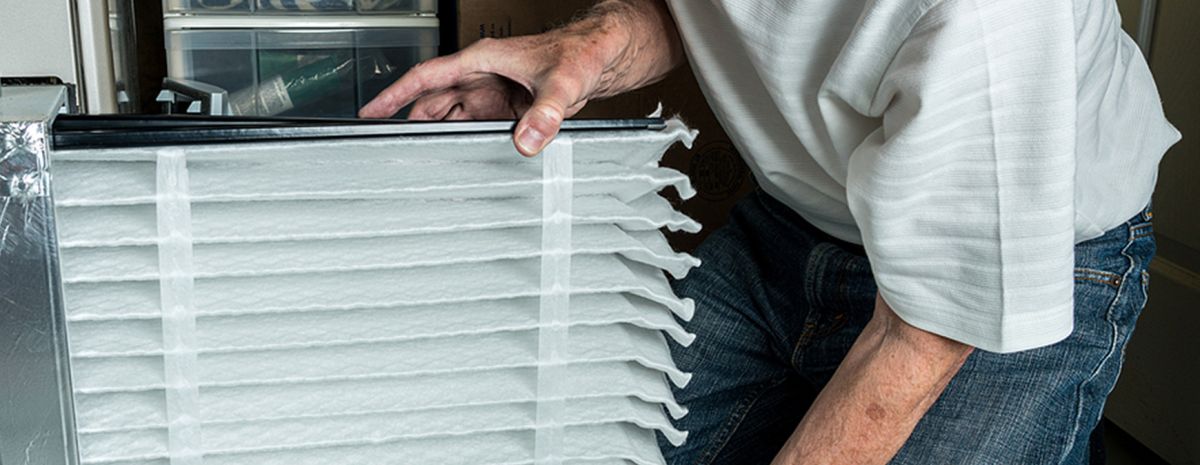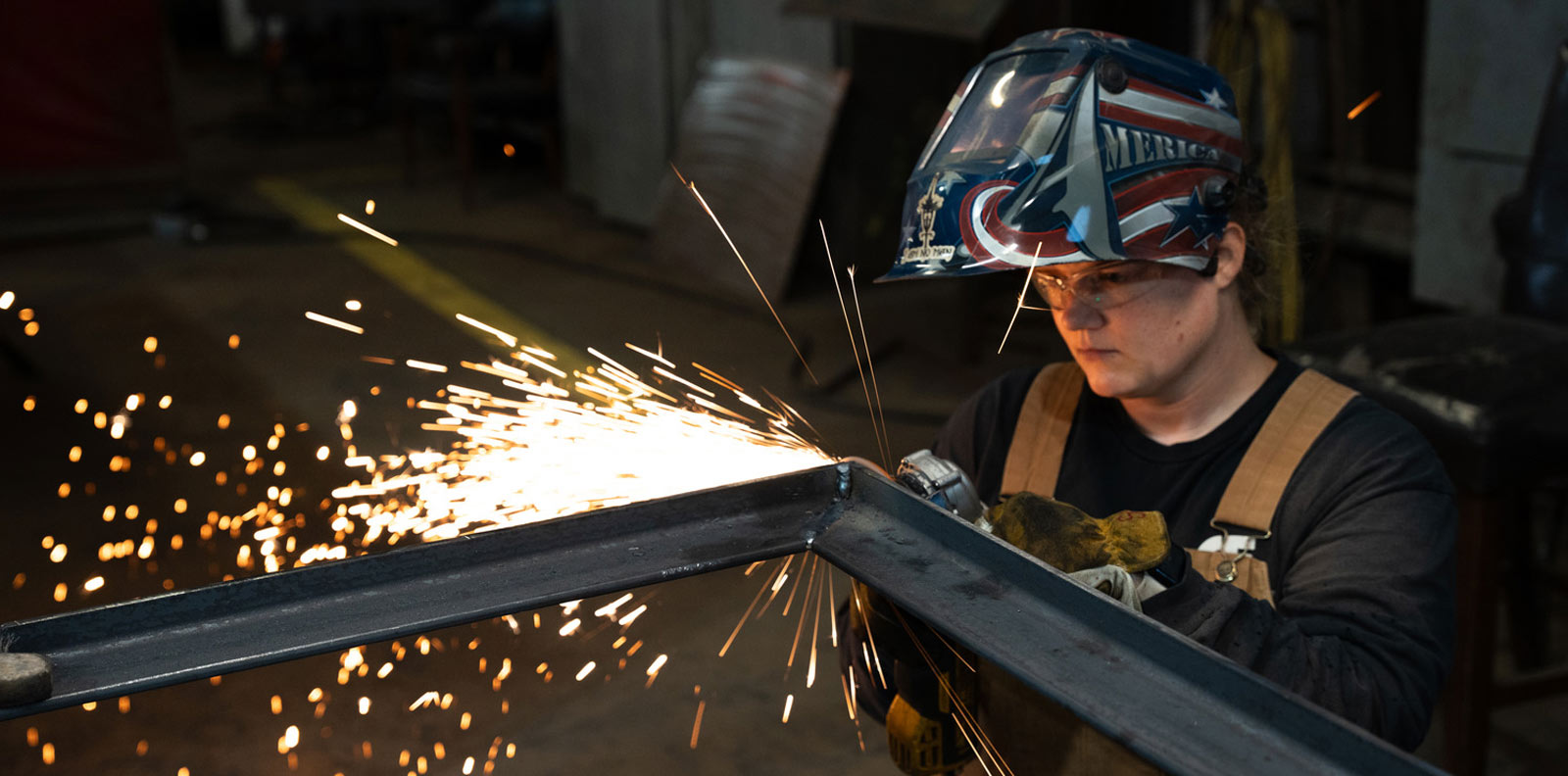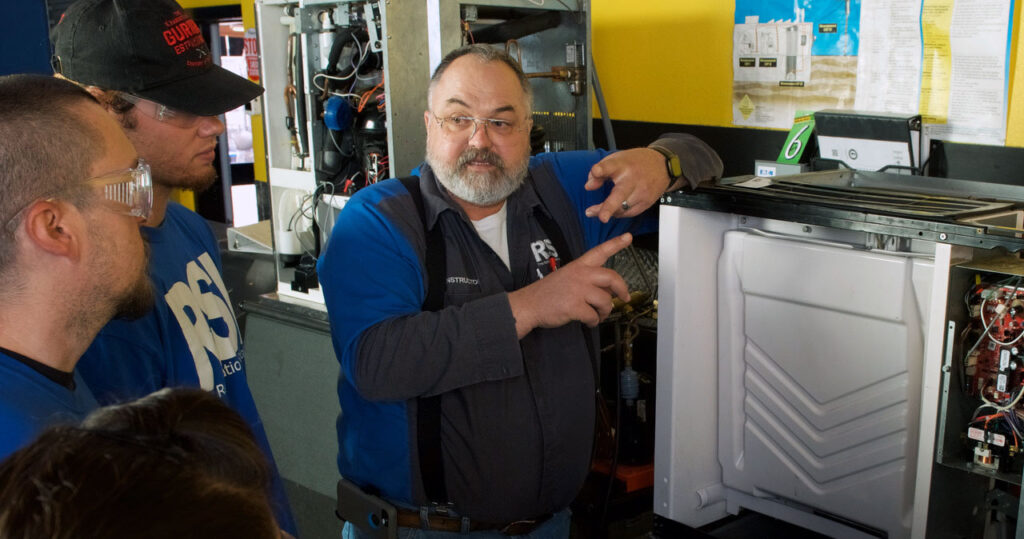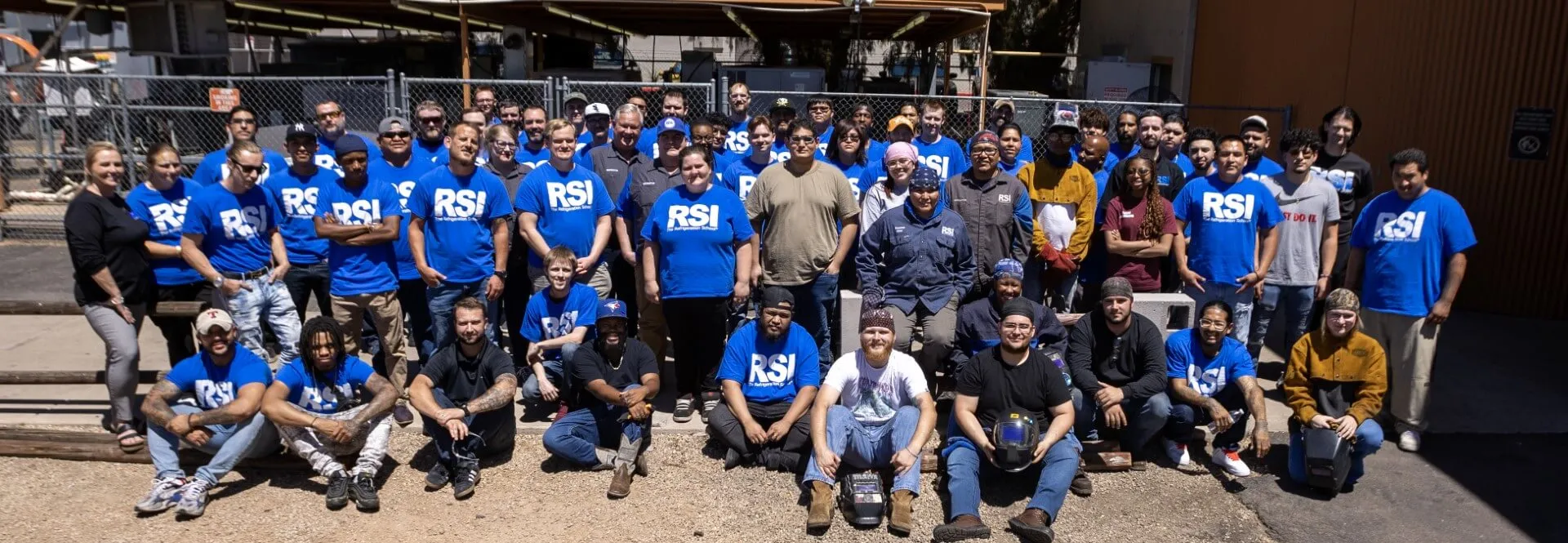RSI is a Great Training Option for Everyone
Learn more about how we can prepare you to advance your career.
When the temperature drops around the country, more homeowners are likely starting to switch their HVAC systems from cooling to heating.
In order to make this shift as smooth and efficient as possible, some basic maintenance may be required. And, as an HVAC technician, part of customer service can be explaining to customers how to care for their own equipment.1
Here, you’ll get some tips for educating your customers on when and how to change their furnace filters. Plus some signs it may be time to call in a pro HVAC tech.
What Does a Furnace Filter Do?
Before you dive into the specifics of furnace filter replacement, provide customers with a quick rundown of the purpose of this piece of equipment. In short, a furnace filter, or HVAC air filter, acts as a barrier to prevent large airborne particles—roughly 40 microns in size—from reaching and disrupting the sensitive innerworkings of the overall unit.2
How Often Should Customers Change Their Furnace Filters?
The specific time period for replacement can depend on the size and quality of the furnace filter and can range anywhere from one month to an entire year.3 However, HVAC techs can advise homeowners to replace their furnace filter at least four times a year, or every three months as a good rule of thumb.2
Get Started on the Path to a New Career
Fill out our form to learn how we can help you change your life.
Replacing filters is all about striking the perfect balance as there are downsides to replacing too regularly and not often enough. If homeowners replace their filters too often, they could end up spending more money than necessary. When not replaced consistently, the equipment might waste energy and be placed under unnecessary stress.4
It’s an affordable and simple process that nearly any homeowner should be able to handle.2
Tips to Offer Customers on Changing a Furnace Filter
While anyone can Google “how to change a furnace filter,” this information can mean a lot more coming from a professional technician who’s been through proper HVAC training.
Here are some specific tips you can offer your customers for how to replace a furnace filter:
- Make sure the power and the unit itself are turned off before attempting any maintenance.2
- Consult the furnace’s user manual to determine what filters are compatible. You can always take the old filter with you to the store to find the right dimensions.5
- Pay attention to markers on the filter that illustrate the direction in which each side should face.6
- Check to make sure there isn’t any extra space in between the filter and the filter frame. This could be a telltale sign that the filter you’ve chosen is too small or even damaged.2
- Mark the date of replacement somewhere you’ll remember so you can reference for future inspection.6
- Place any seals or gaskets back into their original position to secure the new filter, and switch on the power to make sure it’s working properly.2
When Should an HVAC Tech Takeover?
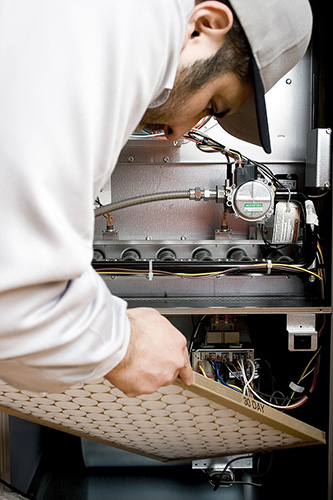
While some basic furnace maintenance can usually be handled by homeowners, more technical and sensitive projects should be left to professionals.2
In fact, it’s advisable for HVAC technicians to service furnaces at least once per year.2 During a standard inspection, an HVAC technician typically checks to ensure belts are intact and operative, ductwork is rust- and crack-free and that fans and other components aren’t obstructed.2
Knowing when to call for service is another important tip you can offer customers. Here are some red flags homeowners should keep an eye out for:
Irregular Noises: It’s not uncommon for furnaces to make a little noise when running. However, when these noises become abnormally loud, it can be a sign of a larger problem, such as a busted belt.7
Higher Utility Costs: If homeowners notice rising energy bills, there might be a malfunctioning part decreasing efficiency.7
Consistent Thermostat Adjustment: If you find yourself regularly adjusting the thermostat to keep your home warm without seeing any perceptible change, there could be a problem with the thermostat or the furnace.7
Benefits of Routine HVAC Maintenance
Routine HVAC maintenance like changing filters can boost efficiency and help make a customer’s furnace last longer.4 So, it’s a good idea to keep your customers informed about the tasks they can handle on their own and when to call in a pro.
Additional Sources
1https://www.bls.gov/ooh/installation-maintenance-and-repair/heating-air-conditioning-and-refrigeration-mechanics-and-installers.htm#tab-2
2https://www.nachi.org/change-hvac-filter.htm
3https://www.florenceutilitieswi.com/why-do-i-need-change-my-furnace-filter
4https://www.achrnews.com/articles/128982-helping-customers-select-adequate-hvac-filtration
5https://projects.truevalue.com/maintenance_and_repair/cooling_and_heating/how-to-choose-the-best-furnace-filter.aspx
6https://www.ahs.com/home-matters/repair-maintenance/how-to-change-furnace-filter/
7https://www.angieslist.com/articles/furnace-repair-know-when-and-whom-call.htm
This blog has been labeled as archived as it may no longer contain the most up-to-date data. For a list of all current blog posts, please visit our blog homepage at https://www.rsi.edu/blog/
